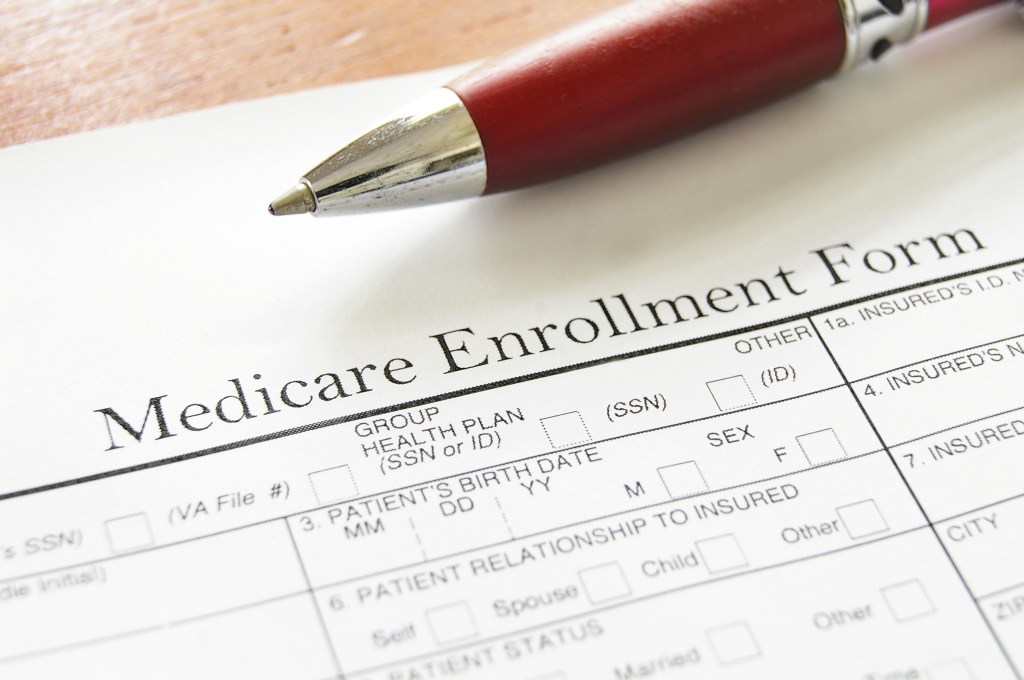Correction: An earlier version of this story incorrectly stated that a special eight-month enrollment period is not available to seniors who work for small employers when they leave their jobs.
Your 65th birthday is coming up. Soon, you think, the government will send you a packet explaining how to enroll in Medicare — its vast health program for 46 million seniors.
Don’t hold your breath.
Astonishingly, no coordinated effort to reach out to soon-to-be-65-year-olds exists. You have to figure out what to do — and when to do it — on your own, along with 10,000 Americans reaching the age of Medicare eligibility every day.
Give yourself plenty of time.
“When you turn 64, start doing research and preparing to make decisions,” said Philip Moeller, author of the just-published, “Get What’s Yours For Medicare: Maximize Your Coverage, Minimize Your Costs.”
Be forewarned. Little about Medicare is straightforward. In his book, Moeller calls the program “opaque” and “impenetrable.” For every general rule, there is an exception and understanding how rules apply to you may be difficult.
 NAVIGATING AGING
NAVIGATING AGING“The process is mind-boggling — incredibly frustrating,” said 68-year-old Jean Sommerfield of New York City, who has struggled for months to understand the Medicare choices that lie before her.
Making a mistake can be costly. If you miss enrollment deadlines or make incorrect assumptions about coverage, you may find yourself without insurance protection for several months or incur substantial penalties.
Here are some basics about enrolling in Medicare targeted toward the soon-to-be-seniors crowd. (Slightly different rules apply to people with disabilities.)
Becoming eligible. You’ll become eligible for Medicare on your 65th birthday. You may sign up for the program then or delay doing so if you’re working. See details below:
Enrollment is handled by Social Security and can be done online, in-person, or via written forms sent through the mail.
Dealing with Social Security can be difficult, Moeller warns. The agency has cut staff and in-person appointments can be hard to get. Don’t wait until the last minute. Be persistent.
Your current Social Security status is relevant. If you’ve already started receiving Social Security, which becomes possible from age 62 on, you’ll be enrolled automatically in Medicare when you turn 65. But if you aren’t getting Social Security, you’ll only secure Medicare coverage if you take the initiative and fill out the necessary forms.
Two paths. The first big decision you need to make is which type of Medicare you want to have: original Medicare, which allows you to go to any doctor of your choice but can expose you to significant out-of-pocket costs; or a managed-care-style Medicare Advantage plan, which limits your choice of doctors but also tends to be less costly, and often offers extra hearing and vision benefits.
If going to doctors you’ve seen for years is a priority, check whether they take original Medicare (some doctors have dropped out of the program) or the Medicare Advantage plan that you’re considering, advised Fred Riccardi, director of client services at the Medicare Rights Center in New York City.
If paying for prescription drugs is a pressing concern, compare coverage available under original Medicare (you’ll have your choice of drug plans in your area) and Medicare Advantage (drug coverage may be included in some plans but not in others).
Signing up. People newly eligible for Medicare can join the program during an “initial enrollment period” beginning three months before their 65th birthday and ending four months later.
If you want comprehensive coverage under original Medicare, you’ll need to sign up for Part A (for inpatient hospital services and other types of institutional care), Part B (for physicians’ services and other forms of outpatient care) and Part D (for prescription drugs).
Those who can afford it will also want to get a Medicare supplemental or “Medigap” policy, which pays expenses such as deductibles (the amount you have to pay before insurance kicks in), co-insurance (your portion of the bill, after insurance pays) and co-payments (the amount you pay every time you seek care).
There’s a separate six-month initial sign-up period for Medigap. No one can be denied a policy during this period but once it expires, insurers are allowed to exclude you based on underwriting criteria.
People who opt for Medicare Advantage often receive Part D coverage through these plans, but not always. Before selecting a Medicare Advantage plan, check whether prescription drug coverage is included and what terms apply.
Consider costs. Part A Medicare is free to people who have worked for 40 quarters and paid Medicare taxes or those whose spouses have done so. Part B monthly premiums were $121.80 this year, but people with higher incomes pay more.
Some Medicare Advantage plans don’t charge anything beyond the Part B premium; others cost more than $100 a month. Deductibles and co-payments can also vary by plan. Unlike original Medicare, these plans usually impose a cap on out-of-pocket expenses to no more than $6,700 a year.
Part D premiums average around $40 a month, but vary widely by plan, as do the medications on each plan’s formulary (a list of preferred drugs), what plans pay, and restrictions on coverage. “It’s ridiculously challenging to figure all this out, like comparing apples and zebras,” said Sommerfield, who’s signing up for Part B and Part D for the first time when she retires at the end of this month.
Assistance with these costs is available to people with low incomes. Check with a senior health insurance counselor (see box) or advocate if you think you qualify.
For late-comers. Every year, seniors who missed initial enrollment can sign up for Medicare during a general enrollment period that lasts from Jan. 1 to March 31. But coverage won’t begin until July 1. And late enrollment penalties for Part B and Part D will almost certainly apply — 10 percent for every 12 months you delayed enrollment or 1 percent a month, respectively. You may get relief if you can prove a government official gave you wrong information.
If you’re working. There’s no need to sign up for Medicare if you’re still working and have health insurance through your employer. When you decide to retire, you’ll have eight months after your employment ends to enroll in the program. No penalties will be imposed and Medigap coverage will be guaranteed if you choose to go that route.
The exception: If you work for an organization with fewer than 20 employees you should sign up for Medicare at age 65, said Riccardi of the Medicare Rights Center. If you don’t do so, you risk a significant gap in coverage because Medicare is assumed to be your primary insurer when you become eligible for the program if you work for a small employer.
Common mistakes. People often assume they don’t need to enroll in Medicare if they have retiree health insurance, individual coverage through a state health insurance exchange or coverage through COBRA, a program that allows an individual to extend employer-based insurance coverage for up to 18 months after losing or leaving a job.
That’s not correct. If you’ve turned 65, you can’t rely on retiree health insurance, individual health insurance or COBRA to serve as your main source of health care coverage. Medicare is assumed to be your primary insurer even if you haven’t yet signed up; other sources of coverage are assumed to be secondary.
In practical terms, this means that you can’t count on those other types of insurance to pay your hospital and doctor bills after you turn 65, in most cases.
Also, unlike insurance you might have gotten through your employer, there is no such thing as a family policy through Medicare. Everyone who wants coverage has to sign up individually, making complex choices based on their medical needs, preferences and financial circumstances.
KHN’s coverage of late life and geriatric care is supported by The John A. Hartford Foundation.







